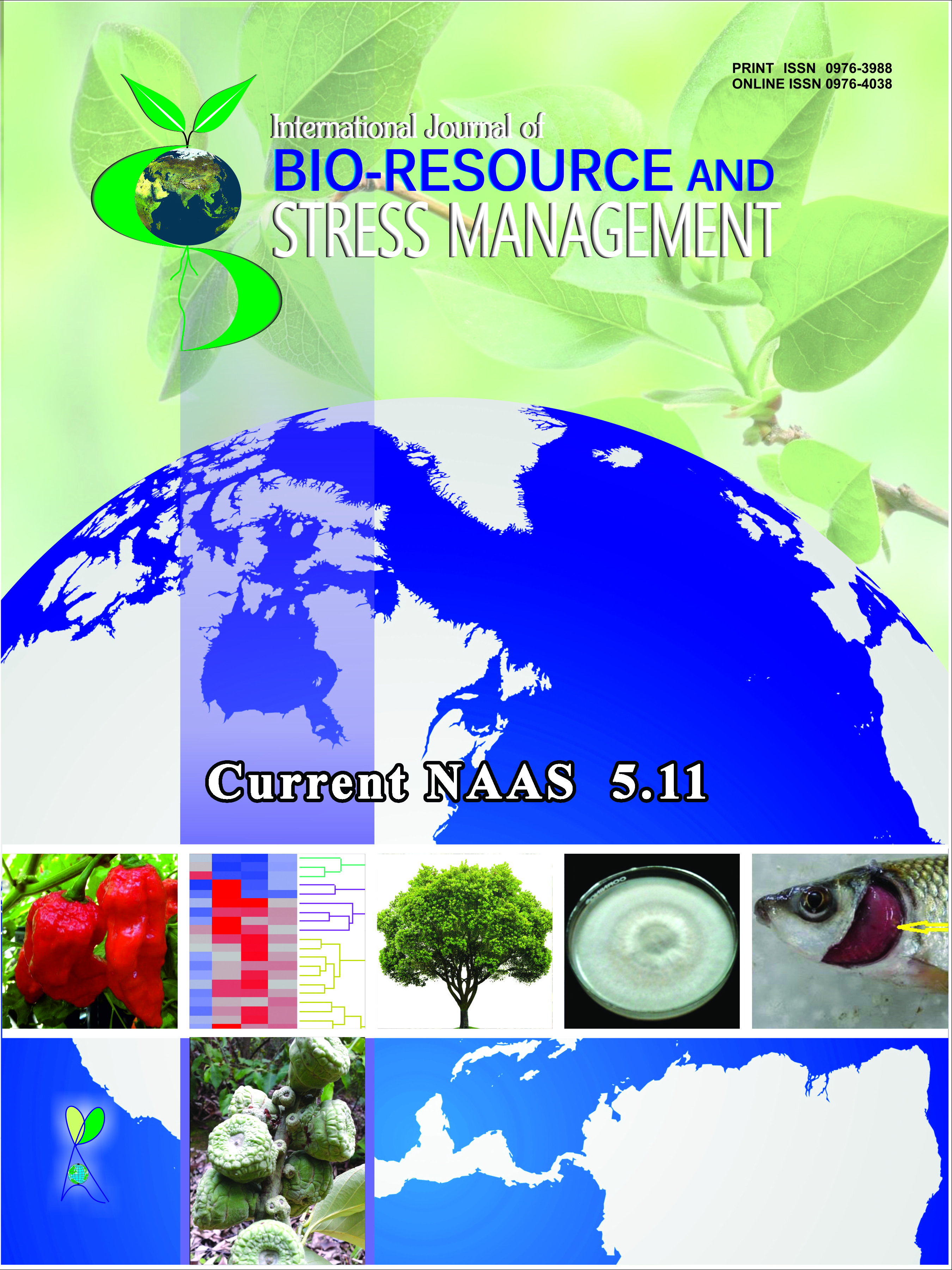Studies on Biology of Brinjal Fruit and Shoot Borer, Leucinodes orbonalis (Guenee) under Laboratory Condition
Keywords:
Brinjal, Leucinodes orbonalis, age, female fecundity, life tableAbstract
Brinjal (Solanum melongena L.) is cultivated extensively in different parts of India and considered to be one of the most remunerative vegetables. However, the brinjal growers suffer from severe yield loss mainly due to brinjal fruit and shoot borer, Leucinodes orbonalis Guenee (Lepidoptera: Pyralidae). Therefore, an attempt has been made to study the growth and development along with life tables of this noxious insect in the laboratory at 27±10C and 80±5% RH. as these types of information are very much useful in formulating a stable pest management programme. The experimental findings revealed that larval period, pupal period, adult longevity and mean length of generation were 16.2, 7.6, 3.8 and 26.9 days, respectively. The above biological parameters indicated that the insect could complete a generation within a month. Percent adult emergence was relatively low (16.7) which badly affected the growth index (0.68) and suitability index (0.05) of the insect. Results on life tables indicated that age specific survival (lx) of insect was gradually decreased with the advancement of time. Expectancy of life also revealed similar trend. Natality rate showed no similarity during whole reproductive period which was continued up to 2.7 days with a fecundity of 35.4 eggs female-1 while net reproductive rate was estimated 7.93 females female-1. The approximate rate of increase (rapprox) was slightly lesser than actual rate of natural increase (raccurate) indicated the population trends towards overlapping generations. Finite rate of increase, potential fecundity and monthly rate of increase were 1.07 females female-1 day-1, 79.0 females female-1 and 7.61 females female-1, respectively. Beside these, time required for the population to double was 10.25 days. Results on stable-age distribution indicated that on reaching stable age, maximum contribution to the population distribution was made by larval stage (61.70%) followed by egg stage (30.45%) and on reaching raccurate the percent distribution of this insect population decreased gradually with the increase of developmental periods.
Downloads
Downloads
Published
How to Cite
Issue
Section
License
Authors retain copyright. Articles published are made available as open access articles, distributed under the terms of the Creative Commons Attribution-NonCommercial-ShareAlike 4.0 International License, which permits unrestricted non-commercial use, distribution, and reproduction in any medium, provided the original author and source are credited. 
This journal permits and encourages authors to share their submitted versions (preprints), accepted versions (postprints) and/or published versions (publisher versions) freely under the CC BY-NC-SA 4.0 license while providing bibliographic details that credit, if applicable.





